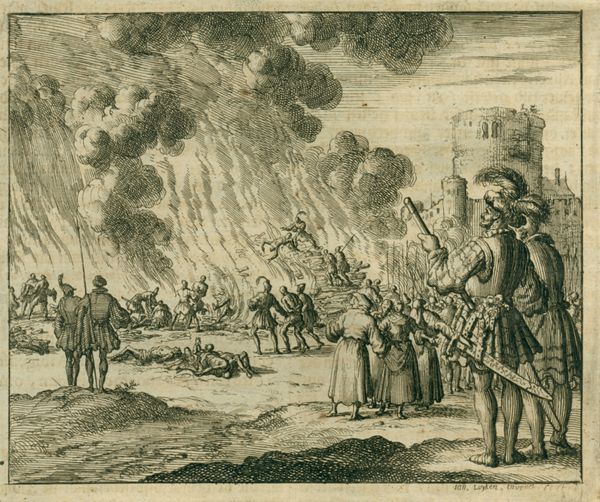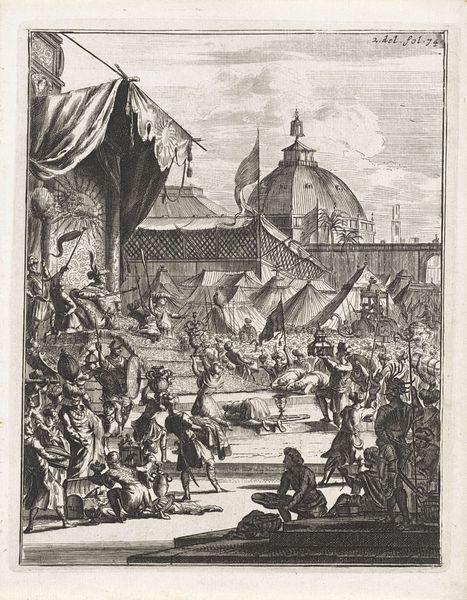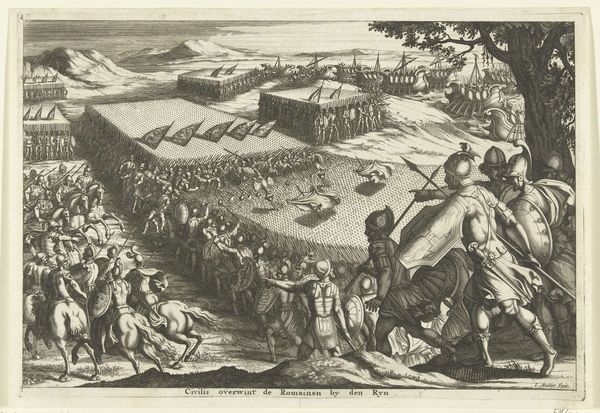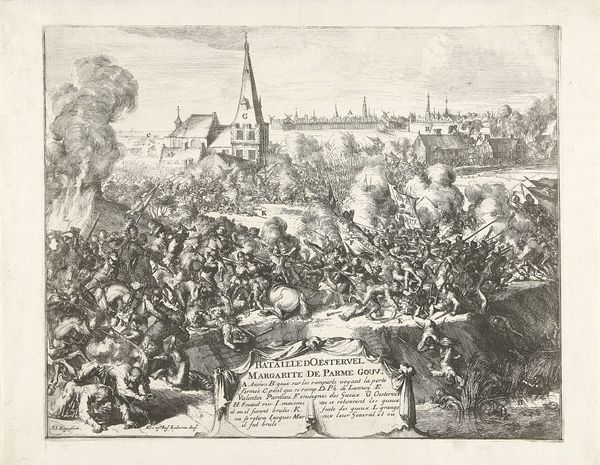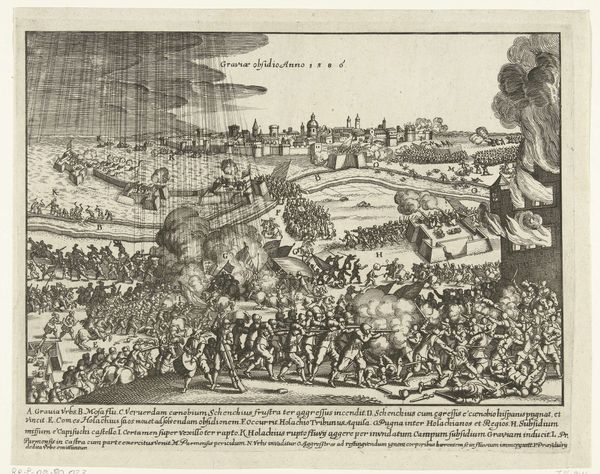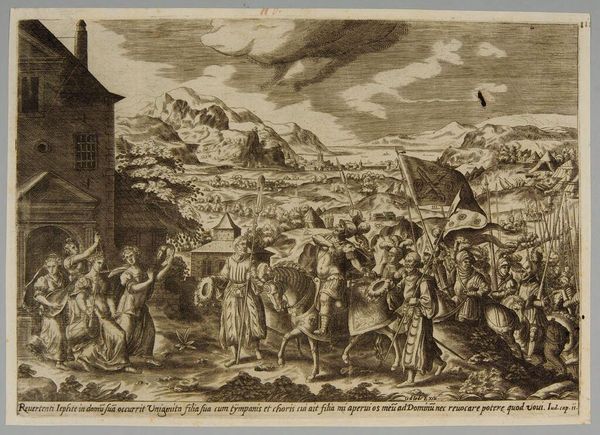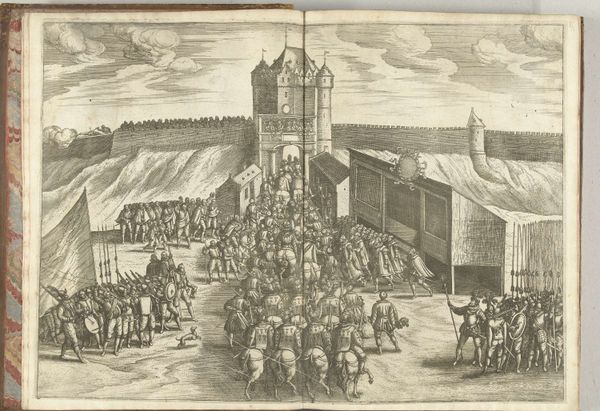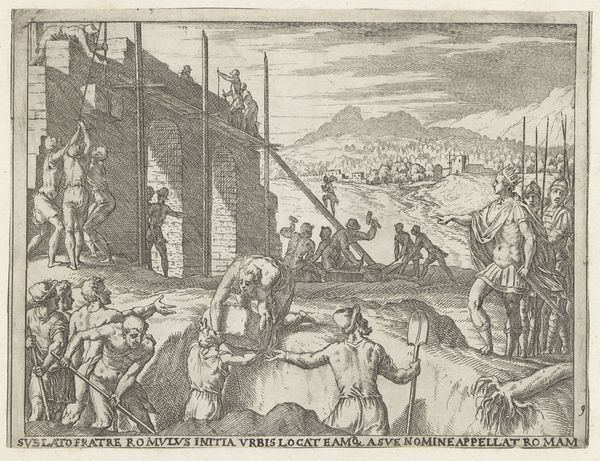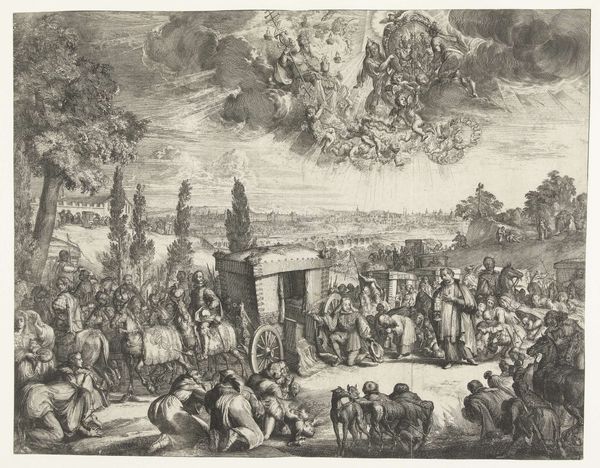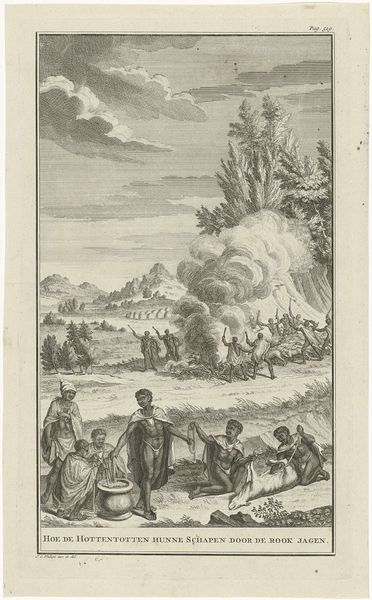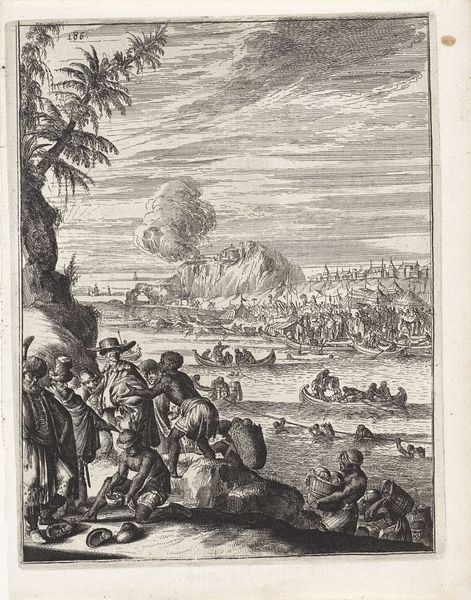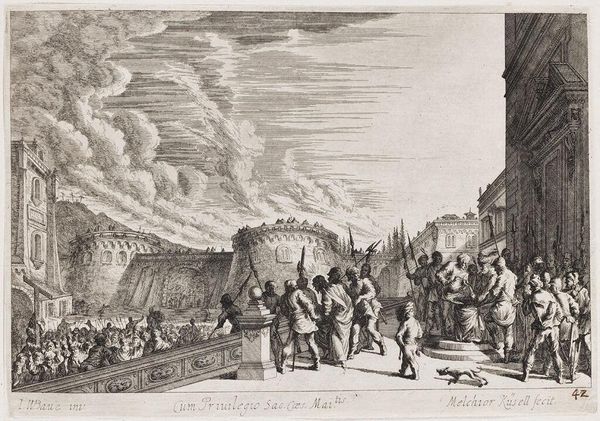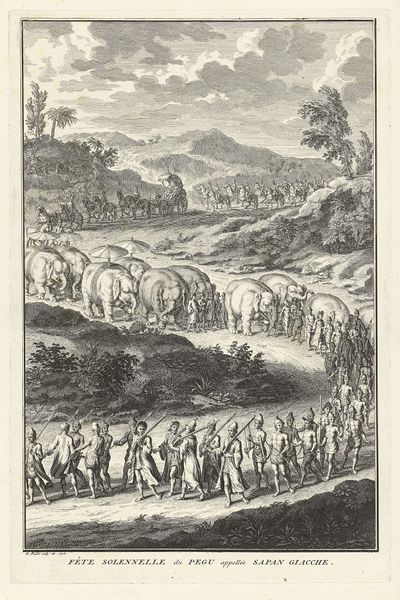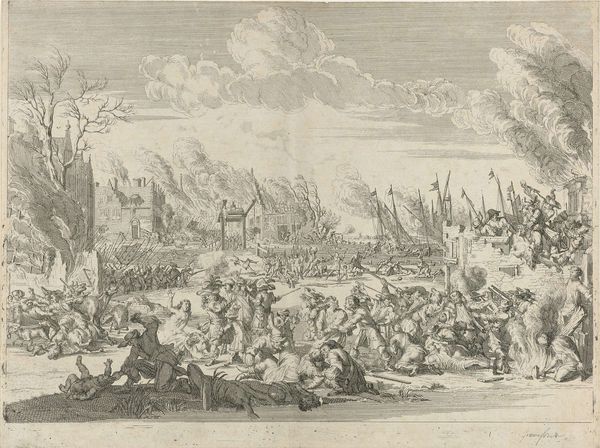
print, engraving
#
narrative-art
#
dutch-golden-age
# print
#
old engraving style
#
figuration
#
line
#
cityscape
#
genre-painting
#
history-painting
#
engraving
Dimensions: height 194 mm, width 151 mm
Copyright: Rijks Museum: Open Domain
Editor: This engraving, "Twee Indiase vorsten buigen voor Rijcklof van Goens in Kollam" from 1676, depicts two Indian rulers bowing before Rijcklof van Goens. It's fascinating how much detail is conveyed through just lines. What strikes me is the contrast between the European figures and the Indian ones. What can we read into that, beyond the obvious? Curator: That contrast, as you noted, is absolutely key. We are seeing here a meticulously constructed image intended to justify and celebrate Dutch colonial power. How does the artist achieve that effect, visually? Consider the body language. Editor: Well, the Dutch figures are upright, confident, almost regal. And the Indian rulers are literally bowing down. It seems like a deliberate power dynamic on display. Curator: Precisely! And that bowing isn’t merely a sign of respect, it’s a visual representation of submission, of a forced hierarchy. The very act of depicting this scene normalizes the power imbalance. Note, too, the weaponry, the composition that places the Dutch at the literal and figurative high ground, and even the bodies of those made to prostrate themselves are not individualized. What narrative does that tell, when taken together? Editor: It creates an overwhelming sense of Dutch authority. But the depiction seems to lack nuance, almost like propaganda. Is that a fair assessment? Curator: Absolutely. These images served to solidify the colonizers' sense of superiority and divine right. Consider, even today, how such visual narratives continue to shape our understanding of history and power. It’s essential to deconstruct these embedded messages. Editor: It is sobering to think about how art, even something that looks like a simple historical record, can reinforce oppressive structures. Thanks, this really makes you see things in a different light! Curator: And, by questioning these images, we begin to challenge those structures and open up possibilities for a more equitable understanding of the past.
Comments
No comments
Be the first to comment and join the conversation on the ultimate creative platform.
